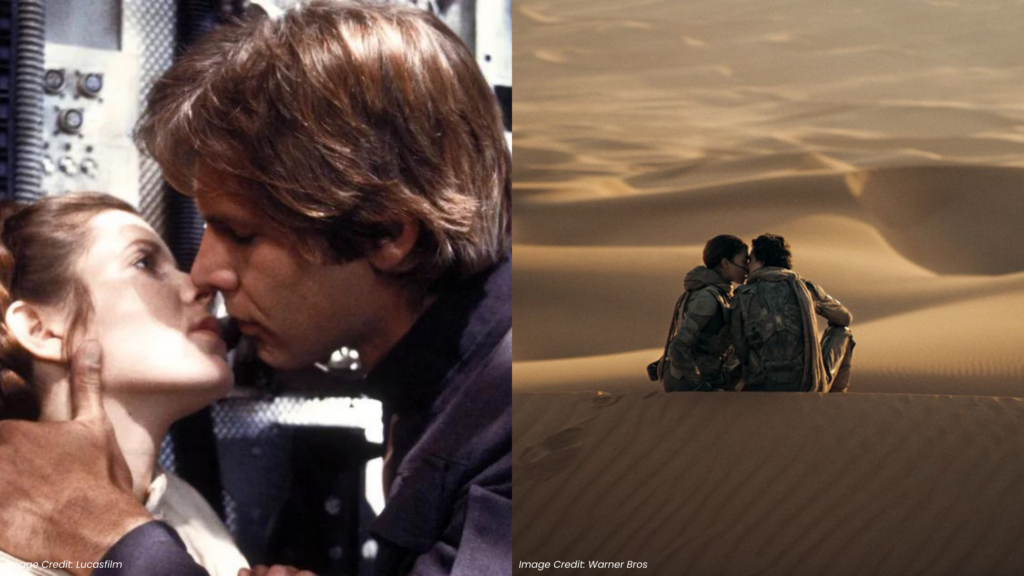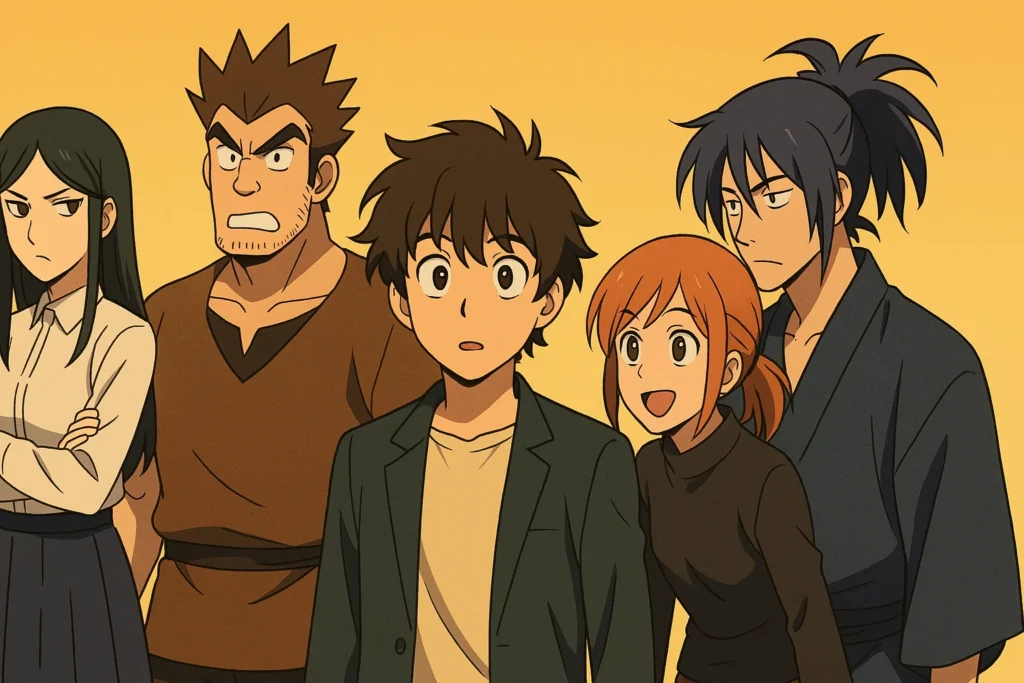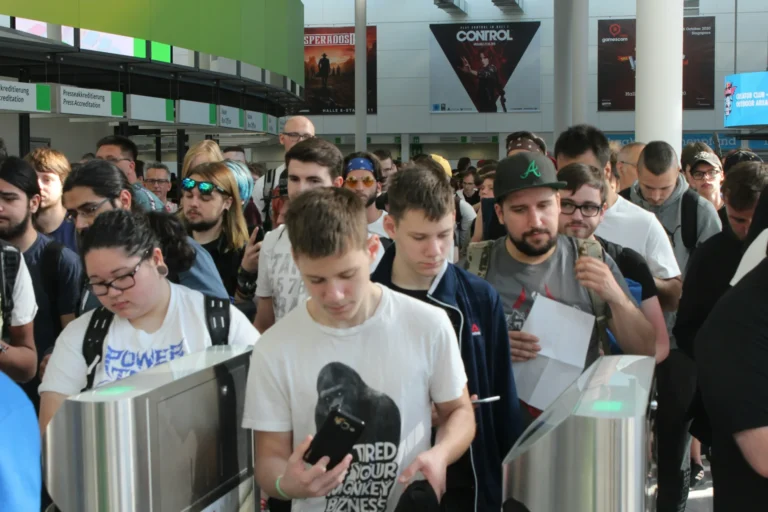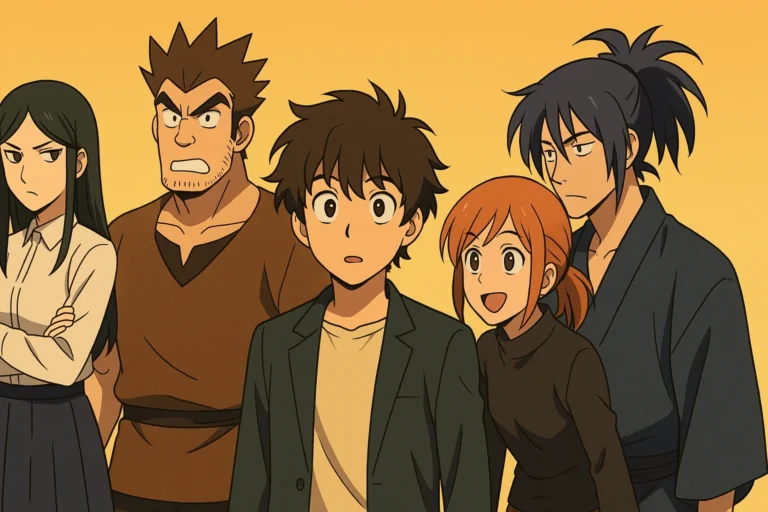The extensive universes of the Star Wars saga and Dune show remarkable similarities. Identifying Everything Star Wars Borrowed from Dune is crucial for comparing their narratives.
The Star Wars saga and Dune feature epic battles between good and evil, with heroic characters fighting against oppressive forces. These stories also explore themes of power, destiny, and the balance between light and dark. Additionally, both narratives involve complex political landscapes and the struggle for control over vast intergalactic empires. The rich world-building and intricate mythologies found in both Star Wars and Dune add depth and complexity to the storytelling, captivating audiences with their immersive and imaginative universes.

Influences Star Wars Borrowed from Dune
Desolate Desert Worlds: Tatooine vs Arrakis

In both Star Wars and Dune, choosing a desert planet as the starting point for the protagonists’ journeys is not just a setting but a character in its own right, influencing the narrative and the characters’ development.
In Star Wars, Tatooine serves as a backdrop for Luke Skywalker’s humble beginnings. The harsh, barren landscape of Tatooine mirrors Luke’s initial isolation and longing for something greater, setting the stage for his transformation from a farm boy to a hero.
Similarly, in Dune, Arrakis is more than just a setting—it’s central to the story’s plot and themes. The planet’s harsh desert conditions, deadly sandworms, and the precious spice melange are integral to the narrative. For Paul Atreides, Arrakis is a crucible that tests and ultimately transforms him. The planet’s challenges, its Fremen inhabitants, and the mystical spice all contribute to Paul’s metamorphosis into Muad’Dib, a messianic figure.
In both sagas, the desert planets are not mere backdrops but are woven into the story’s fabric, shaping the characters and influencing the plot. They are places of trial and transformation, where the heroes are forged, and their destinies unfold, highlighting the intrinsic connection between the characters and their environments.
Desert Locals: Tusken Raiders vs The Fremen
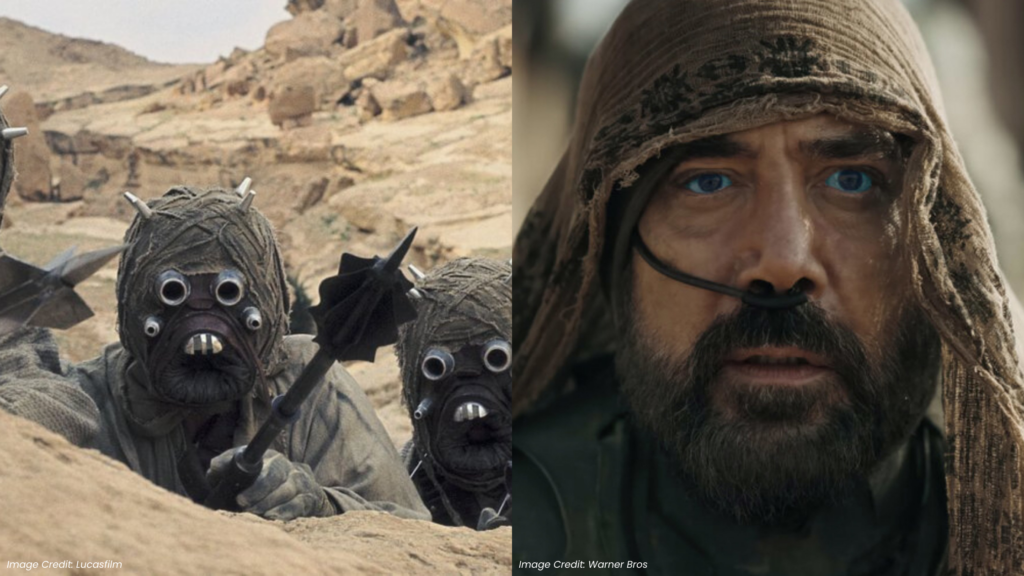
The Tusken Raiders of Star Wars and the Fremen of Dune are fascinating examples of how desert environments influence the development of distinct, resilient cultures within sci-fi narratives. Both groups are indigenous to their respective desert worlds, shaped by the harsh realities of their environments, yet they differ significantly in their roles and complexities within their stories.
While both groups exhibit the traits of desert survivalists—resourcefulness, resilience, and a fierce defence of their territory—the Fremen are portrayed with more depth and play a more pivotal role in their narrative. They are not just a backdrop for the protagonist’s journey but are central to the unfolding story and its themes. The Tusken Raiders, while iconic, are more peripheral, serving as obstacles or elements of the harsh world that shaped characters like Luke Skywalker.
Desert Transport: Comparing Sandcrawlers

On the desert planet of Tatooine in the Star Wars universe, sandcrawlers are massive, lumbering vehicles that play a unique role in the planet’s economy and culture. Originally brought to Tatooine by off-world mining corporations, these giant machines were abandoned once the mining efforts proved unprofitable. However, they found a new lease on life when adopted by the Jawas, a species of industrious scavengers native to Tatooine. The Jawas repurposed these sandcrawlers into mobile homes and workshops, using them to traverse the vast deserts in search of salvageable technology and droids, which they then repaired and traded with the planet’s inhabitants.
In stark contrast, on the desert world of Arrakis, the primary setting of Dune, sandcrawlers serve a completely different purpose. Here, these enormous vehicles are employed by the planet’s inhabitants to harvest the most valuable substance in the universe: the spice melange. Spice, vital for space travel, extends life and enhances mental abilities, making it a highly coveted resource. The sandcrawlers of Arrakis are equipped to collect spice from the dunes while protecting the harvesters from the planet’s giant sandworms, creatures that are attracted to the vibrations on the surface and pose a deadly threat to spice mining operations.
Gigantic Desert Denizens: Sarlacc and Sandworms

The Sarlacc in the Star Wars universe and the sandworms of Arrakis in Dune are iconic creatures that embody the dangers lurking within their respective desert worlds. On Tatooine, the Sarlacc is a monstrous, pit-dwelling creature known for its immense size and food consumption method. Found in the Great Pit of Carkoon, the Sarlacc is essentially a giant mouth in the desert, waiting for unsuspecting victims to fall into its grasp. It slowly digests its prey over thousands of years, a fate considered worse than death by many in the galaxy.
Similarly, the sandworms of Arrakis are colossal creatures that dominate the desert landscape of their planet. They play a crucial role in the Dune saga, not just as threats but as central to the planet’s ecology and the production of the spice melange. These giant worms are attracted to vibrations on the sand’s surface, making spice harvesting perilous. Unlike the Sarlacc, sandworms are revered and deeply integrated into the culture and religion of Arrakis’ indigenous Fremen, who see them as embodiments of the planet’s essence.
While the Sarlacc is a passive predator, lying in wait for its meals, sandworms are active hunters, responding aggressively to disturbances on the desert surface. Both creatures, however, significantly impact their environments and the narratives of their respective universes. They instil fear and respect, representing nature’s raw power and unpredictability within their sandy realms. Their presence underscores the theme of survival against formidable natural obstacles, highlighting the adaptability and resilience of the characters who inhabit or visit these harsh desert worlds.
The Commodity of Spice

In both the Star Wars and Dune universes, spice serves as a critical element that shapes the economic and social landscapes. In Star Wars, spice mined from the planet Kessel is a dangerous but valuable substance, often used as a narcotic. The perilous conditions of the Kessel spice mines are well-known, with the product being a key driver in the galaxy’s underworld economy. The extraction of spice is fraught with danger, not only due to the harsh mining conditions but also because it attracts the attention of various criminal organisations that seek to control its lucrative trade.
In contrast, the spice melange found on the desert planet of Arrakis in Dune is an invaluable resource with profound effects on individuals and the broader universe. Unlike the spice in Star Wars, melange extends life, enhances mental abilities, and is crucial for space navigation, granting prescient abilities to the Spacing Guild’s navigators. This makes spice melange the most precious commodity in the universe, central to political, economic, and religious power structures. The control and distribution of melange are pivotal to the narrative of Dune, influencing the fates of entire planets and the course of the universe’s history.
While both spices are integral to their respective universes, they serve different purposes and symbolise distinct themes. In Star Wars, spice is a representation of the darker side of commerce and the perils of substance abuse, often associated with the galaxy’s criminal underworld. In Dune, spice melange embodies the intertwining of power, religion, and destiny, with its control being essential for dominance and survival in a complex universe. Despite these differences, in both narratives, the pursuit and control of spice drive key plot developments, highlighting its significance across these iconic sci-fi landscapes.
Tyrannical Regimes: Galactic Empire vs. Imperial Rule

In both Star Wars and Dune, rebellion against oppressive regimes is central to the narrative arc, illustrating the universal struggle for freedom and justice. In Star Wars, the Galactic Empire, led by Emperor Palpatine, represents the pinnacle of autocratic rule, exercising its power with an iron fist across the galaxy. This regime is characterised by its massive military, the suppression of individual freedoms, and the use of fear and force to maintain control. The Empire’s downfall is brought about by the Rebel Alliance, a group of freedom fighters who band together from various backgrounds to restore democracy and overthrow the tyrannical rule.
Similarly, in Dune, the universe is dominated by a feudal structure known as the Imperium, with the Padishah Emperor at its head. This system is marked by its forms of oppression, where noble houses vie for power, influence, and control over the all-important spice melange. The protagonist, Paul Atreides, finds himself at the centre of a complex web of politics, religion, and prophecy, leading a rebellion against the Imperium’s oppressive structures. His journey is a fight for political power and a struggle against a predetermined destiny that threatens to impose a new form of tyranny.
Both narratives explore the dynamics of power, resistance, and change. They portray the fall of these oppressive regimes not just as military victories but as profound shifts in their universes’ social and moral order. While Star Wars presents a clearer battle between good and evil, Dune delves into the nuances of power, exploring the consequences of Paul’s rise and the cyclical nature of oppression and liberation. Despite their differences, both sagas underscore the enduring human desire for freedom and the inevitable resistance against tyranny, offering a compelling commentary on the nature of power and the human spirit’s resilience.
Lineage of Antagonism: Heroes and Villains

In both Star Wars and Dune, the revelation that the protagonists are directly related to their respective sagas’ antagonists adds a profound layer of complexity to their character arcs and themes. In Star Wars, the discovery that Luke Skywalker and his sister, Leia Organa, are the children of Darth Vader, the saga’s primary antagonist, is a pivotal moment. This connection deepens the narrative, introducing family, legacy, and redemption themes. It challenges Luke’s perception of good and evil, forcing him to confront his fears and potential for darkness while offering Vader a path to redemption.
Similarly, in Dune, the revelation that Paul Atreides and his sister Alia are the grandchildren of Vladimir Harkonnen, their family’s sworn enemy, adds a tragic and complex dimension to their struggle. This connection is not just a personal shock but has significant political and metaphysical implications within the universe of Dune. It underscores the intertwined fates of the two families and highlights the theme of genetic legacy and destiny that runs through the series. For Paul, this revelation is part of his broader realisation of the cyclical nature of power and his role within the larger cosmic order.
These twists challenge the protagonists’ identities and force them to grapple with their inherited legacies. They must navigate the shadow of their forebears while forging their paths, addressing themes of identity, destiny, and the capacity for change. The revelation catalyses character development and thematic exploration in both narratives, enriching the stories and adding layers of meaning to the protagonists’ journeys.
Mystical Abilities: The Force and The Voice

In both Star Wars and Dune, the concepts of the Force and the Voice represent profound powers that can be wielded to influence, control, or guide others, albeit in distinct ways within their respective universes.
In Star Wars, the Force is a mystical energy field that connects all living things, with the Jedi and Sith harnessing it to perform feats beyond the capabilities of ordinary beings. The Force can be used for telekinesis, mind control, enhanced physical abilities, and even glimpses into the future. While the Jedi use it for peace and defence, the Sith manipulate it for control and domination. The Force’s dual nature, with its Light and Dark sides, reflects the broader thematic dichotomy of good versus evil in Star Wars, emphasising the ethical considerations in wielding such power.
In Dune, the Voice is a specific technique employed by the Bene Gesserit, a secretive sisterhood with advanced mental and physical training. By modulating their voices precisely, Bene Gesserit practitioners can manipulate others’ actions and thoughts, compelling them to obey. Unlike the Force, which is tied to universal energy, the Voice is a skill that can be learned and refined through training. It symbolises the power of persuasion and the importance of understanding human psychology and vulnerabilities.
While the Force encompasses a wide range of abilities, the Voice is more specialised, focusing solely on control through verbal influence. Both, however, are tools that characters must use responsibly, as they can lead to manipulation and dominance if wielded without ethical considerations. The Force and the Voice embody the themes of power, responsibility, and the potential for both benevolence and corruption, highlighting the moral choices characters face in using these abilities.
Charismatic Outliers: Duncan Idaho and Han Solo

Han Solo from Star Wars and Duncan Idaho from Dune are both charismatic characters who add a swashbuckling, adventurous element to their respective stories. While they occupy different roles within their narratives, each character embodies a certain rogue charm and skill set that endears them to audiences and readers.
Han Solo, the quintessential space rogue of the Star Wars universe, is known for his quick wit, piloting prowess, and a certain disregard for authority, all of which contribute to his swashbuckling appeal. As the captain of the Millennium Falcon, he plays a crucial role in the Rebel Alliance’s struggle against the Galactic Empire. Despite his initial self-interest, Han’s character evolves to show loyalty and heroism, making him a beloved figure in the Star Wars saga.
In Dune, Duncan Idaho is a skilled swordmaster loyal to House Atreides, renowned for his combat prowess and deep sense of honor. While he may not initially seem as rogueish as Han Solo, Duncan’s adventures, particularly his interactions and integration with the Fremen, showcase his adaptability and adventurous spirit. His repeated resurrections in the Dune series also add to his legendary status, underscoring his importance across the saga’s extensive timeline.
Both characters serve as vital allies to their respective sagas’ protagonists, offering a blend of combat skill, strategic value, and moral support. While Han Solo’s charm is more aligned with the archetype of the lovable rogue, and Duncan Idaho’s appeal lies in his unwavering loyalty and martial expertise, both characters bring a dynamic, adventurous energy to their stories, engaging in daring exploits that resonate with the theme of heroism against overwhelming odds.
Monarchical Malacology: Jabba the Hutt and Leto II

Jabba the Hutt from Star Wars and Leto II Atreides from Dune are characters whose physical forms and influential statuses are deeply intertwined. However, they represent very different types of power and legacies within their respective universes.
Jabba the Hutt is a notorious crime lord in the Star Wars galaxy, known for his immense size and slug-like appearance, which symbolises his greed and indulgence. His physical form, while seemingly cumbersome, does not hinder his influence or control over his criminal empire. Jabba’s opulence and authority are displayed through his lavish palace on Tatooine, filled with various minions and entertainers. His power is rooted in fear, manipulation, and corruption, reflecting the darker underworld side of the galaxy.
Conversely, Leto II Atreides in Dune undergoes a unique and profound transformation. Ascending to the throne after his father, Paul “Muad’Dib” Atreides, Leto II embarks on a radical path to ensure humanity’s survival through his Golden Path. His transformation into a sandworm-like creature is a deliberate sacrifice, extending his life and granting him immense power but at the cost of his humanity. This metamorphosis is tied to his role as a ruler and a visionary, with his physical form representing the convergence of humans and sandworms, symbolising his deep connection to Arrakis and its future.
While Jabba’s form reflects excess and corruption, Leto II’s transformation manifests his burden and foresight. Both characters demonstrate how their physical states are emblematic of their roles and the nature of their influence—Jabba through his criminal enterprises and Leto II through his visionary, albeit dictatorial, leadership. Despite their differences, both characters exemplify how power and physicality can intertwine, shaping their identities and legacies within their worlds.
Frequently Asked Questions
Did Star Wars draw inspiration from the Dune novels?
Indeed, the Star Wars saga has drawn considerable inspiration from Frank Herbert’s Dune series. This includes thematic and narrative elements shaping the Star Wars universe.
Which narrative components did Star Wars incorporate from Dune?
The narrative components that Star Wars incorporated from Dune include:
- Descendants of Villains: Both stories feature protagonists biologically linked to antagonists.
- Desert Landscapes: Tatooine in Star Wars and Arrakis in Dune are desert planets critical to their respective universes.
- Political Intrigue: The intricate political manoeuvrings and the concept of an interstellar empire are central to both narratives.
Are similar themes present in Dune and Star Wars?
Both Dune and Star Wars encompass similar themes, such as:
- The struggle between good and evil.
- The hero’s journey and personal transformation.
- The use of mystical powers and the burden of destiny.
Which plot elements of Dune are mirrored in the Star Wars series?
Observations of Dune’s influence on the Star Wars plot elements include:
- Prophesied Chosen One: Anakin Skywalker and Paul Atreides fulfil prophecies as central, messianic figures.
- Galactic Empires: The rule of Emperor Shaddam IV in Dune is similar to that of the Galactic Empire in Star Wars.
In what ways did Dune contribute to the creation of the Star Wars setting?
Dune has contributed to the world-building in Star Wars through:
- The concept of an ancient, feudalistic galaxy with noble houses.
- Specified roles of smuggling and trade guilds.
- Creatures and technology adapted for life in a desert environment.
Is Star Wars ‘The Force’ a concept derived from Dune?
While ‘the Force’ in Star Wars is a distinctive concept, it resembles Dune’s ‘Voice’ and ‘Prana-Bindu’ physical and mental conditioning. These similarities suggest some level of influence.
